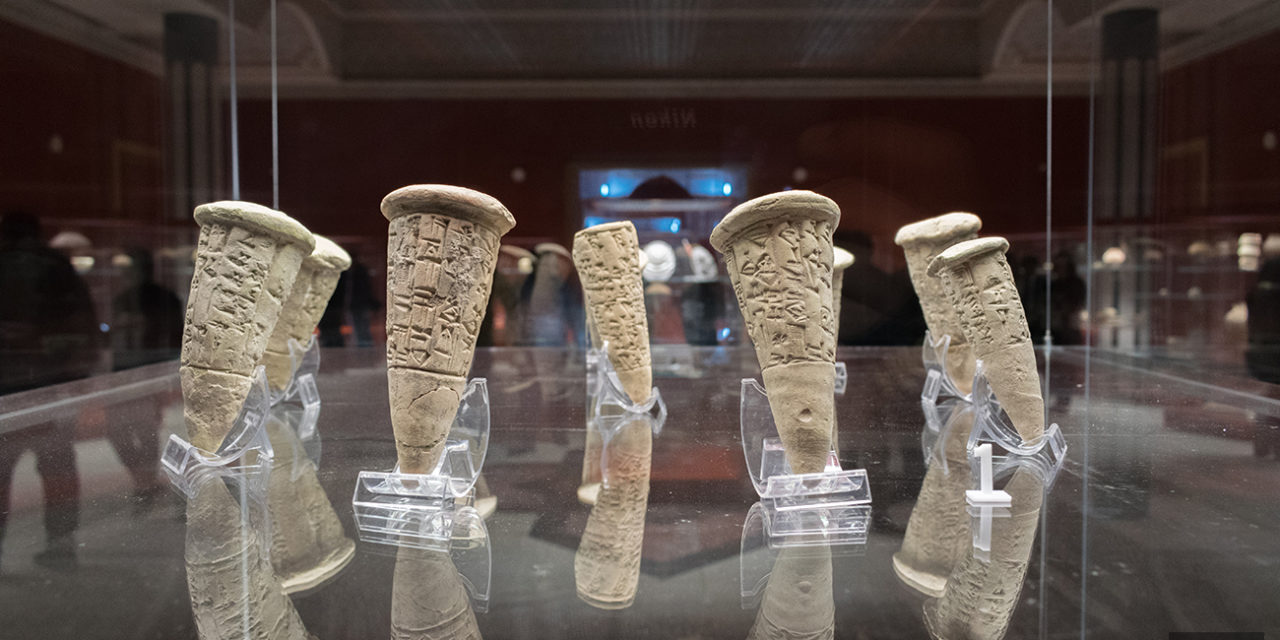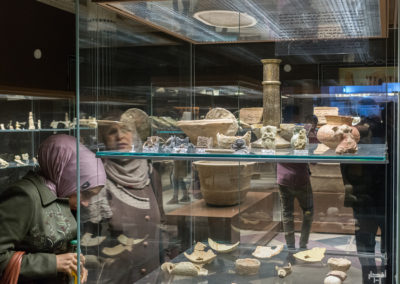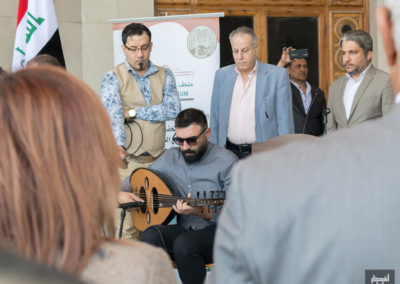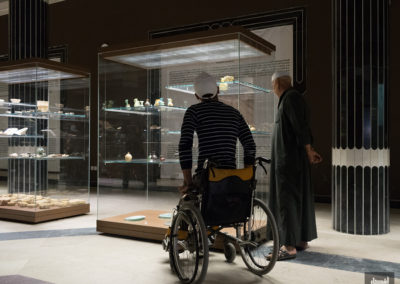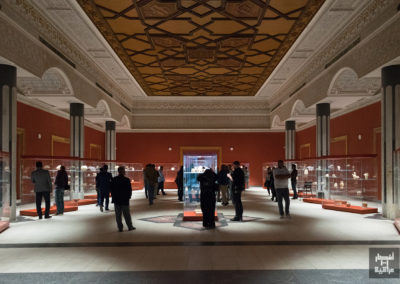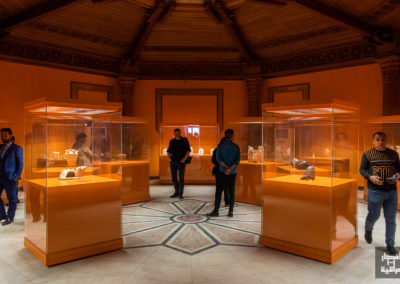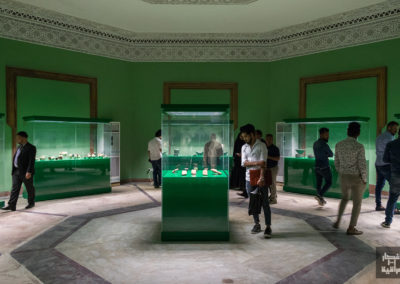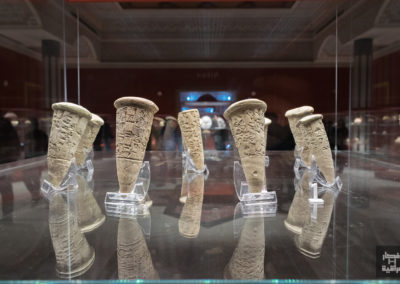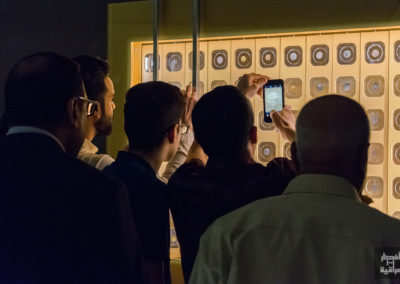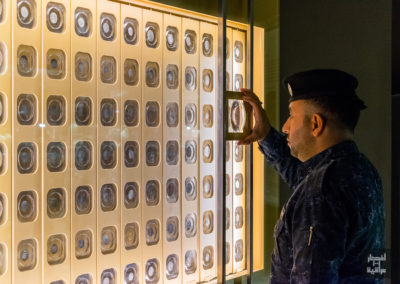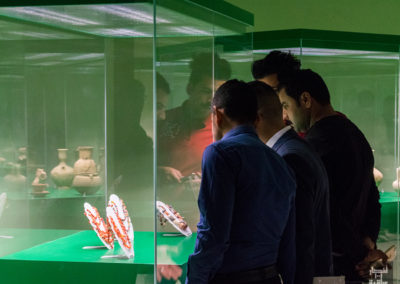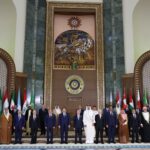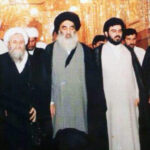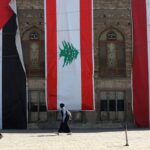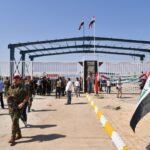The official opening of the Basra Museum on the 19th of March 2019, is the culmination of over a decade of planning and hard work and is a prime example of the success of local efforts and expertise supported by the international community.
The Basra Museum has had a turbulent history. The museum was looted and damaged both during the Gulf War and 2003 U.S.-led invasion. In 2005, Former Director of the Museum, Mudhar Abd Alhay was shot and killed, while his successor and Basra’s current Director of Antiquities and Heritage, Qahtan Al-Abeed narrowly escaped with his life during the incident. After 1991, the remaining antiquities were moved to Baghdad and housed in the National Museum but were once again subjected to looting when the National Museum was ransacked during the U.S. invasion of Iraq. The surviving objects from the original Basra Museum now sit on a single shelf in the Basra Gallery.
The Museum building, a former Saddam Hussain palace, was for many years used by the British Army as an operational centre. As part of their withdrawal plan, the British Army agreed to hand over the former palace to Iraq, located on the waterfront of Shatt Al-Arab. Despite the history of the palace, it has since, been reclaimed by Iraqis and deliberately repurposed to display their history. Qahtan has expressed hopes to “replace the themes of dictatorship and tyranny with civilisation and humanity”. The Basra Museum officially opened all its galleries to the public last month, with support from the U.K. government’s Cultural Protection Fund, administered by the British Council and implemented by the Friends of Basrah Museum Charity (FOBM). The ribbon cutting ceremony was preceded by a beautiful oud rendition of the Iraqi national anthem and speeches by senior figures.
The new galleries cover Sumer, Assyria and Babylonia, with objects dating from 3000 BC to 550 BC and include statues, cylinder seals, jewellery and tablets. With over 2,000 artifacts now on display in the museum, many of which were transferred from the National Museum in Baghdad, the Basra Museum is now the second largest museum in the country.
The late Dr Lamia Al Gailani Werr, a leading Iraqi archaeologist and one of the founding trustees of FOBM, played a key role in the project of reopening the Museum and was remembered by all who spoke at the opening ceremony, “we have delivered the promise, for you, dear Lamia… and we have achieved this dream because of you,” said Qahtan Al Abeed, who continued to say “the world has witnessed what the barbarians did to the Mosul Museum, this is a message to all, if you damage one museum in our beloved north we will celebrate the opening of a new one in the south and we all hope to celebrate the re-opening of the Mosul Museum soon”. Iraqi Parliamentarian, Maysoon Al-Damluji, also emphasised the symbolic importance of the museum, “this is a message to the world; Basra is not just here to provide you with petrol, it has immense history, and culture, and is the home of many intellectuals”.
Focus now turns to the completion and opening of the museum’s resource centre. Dr. John Curtis, Chairman of the FOBM, believes the new resource centre will become a hub of information, not only for Basra, but for the entire southern region of Iraq. The British Institute for the Study of Iraq has donated its entire library to the new Basra Museum, with aims to open the doors of the resource centre to the public later this year.
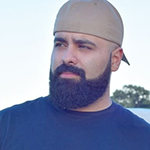
Ali Khadr
Ali Khadr is an Iraqi photographer and the Executive Officer of the British Institute for the Study of Iraq, based in London. Communicating human emotion and capturing moments that would otherwise be lost in time are what drive his passion for photography.

